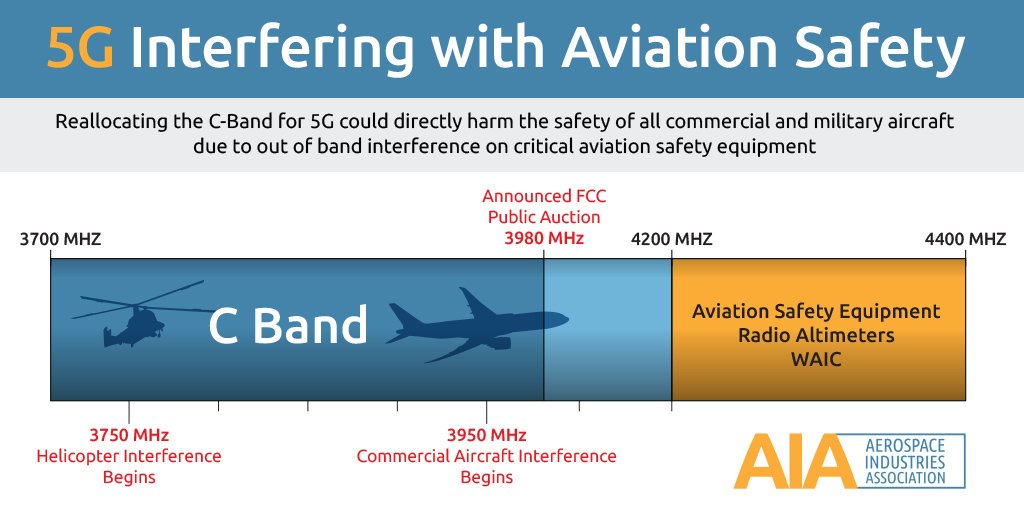


Last year, American wireless carriers halted their plans to launch the higher-power 5G networks around U.S. airports amid concerns about interference with airplanes’ altimeters.
Expectedly, Radio Altimeter Filters and Upgraded replacement units for the mainline commercial fleet should have been available on a schedule that would permit the work to be largely completed by July 2023. After that time, the wireless companies expect to operate their networks in urban areas with minimal restrictions.
Now airlines aren’t expected to get any additional time to upgrade their planes’ equipment to avoid the interference, and instead they are facing a deadline of July 1, which is this Saturday. That’s when AT&T , Verizon and other wireless companies are slated to start running networks at higher power levels (specific spectrum) .
Transportation Secretary Pete Buttigieg on Friday warned of the potential for flight delays for some airlines who haven’t taken action by the deadline. This comes a week before the nation’s wireless carriers will be allowed to boost their C-Band 5G signals beginning on July 1st.
.jpg)
During initial negotiations in January last year , the wireless companies had offered to keep mitigations in place until July 5, 2022, while they worked with the FAA to better understand the effects of 5G C-band signals on sensitive aviation instruments, later the deadline was extended to July 1st.
Buttigieg said more than 80% of the domestic fleet serving U.S. airports has been retrofitted, but there is
“a significant number of aircraft still awaiting retrofit, including many operated by foreign air carriers.”
“This means on bad-weather, low-visibility days in particular, there could be increased delays and cancellations,” the Transportation Department chief said.
.jpg)
Altimeters give a plane’s height and are used in particular on low-visibility days. Only aircraft with retrofitted altimeters will be able to perform low-visibility landings, Buttigieg said.
The Biden administration official’s warnings on Friday came in a letter that he wrote to Airlines for America, an industry group that lobbies for carriers.
“Passengers must not bear the brunt of any airline’s inability to equip sufficient aircraft to be able to operate safely in the 5G C-band environment,” Buttigieg wrote.
Talking about aviation safety, Concern is real as 5G Device harmful interference could lead to an escalation of incidents and accidents that may include 'missed approaches', 'delays', 'diversions', and 'flight cancellations', to runway closures, and worst case scenario can be a Crash.
From the prospective of 5G proliferation and business involved to it , Federal Communications Commission had earlier auctioned the C-band spectrum between 3.7-3.98 GHz, and it was a matter of billions of dollars, Verizon spent over $45 billion and AT&T spent around $23 billion, as they see mid-band frequencies are key for 5G coverage and capacity.
The International Air Transport Association, which represents airlines comprising over 80% of global air traffic, said airlines are shouldering the expense of these equipment upgrades, estimated at more than $638 million.
Related Story....
